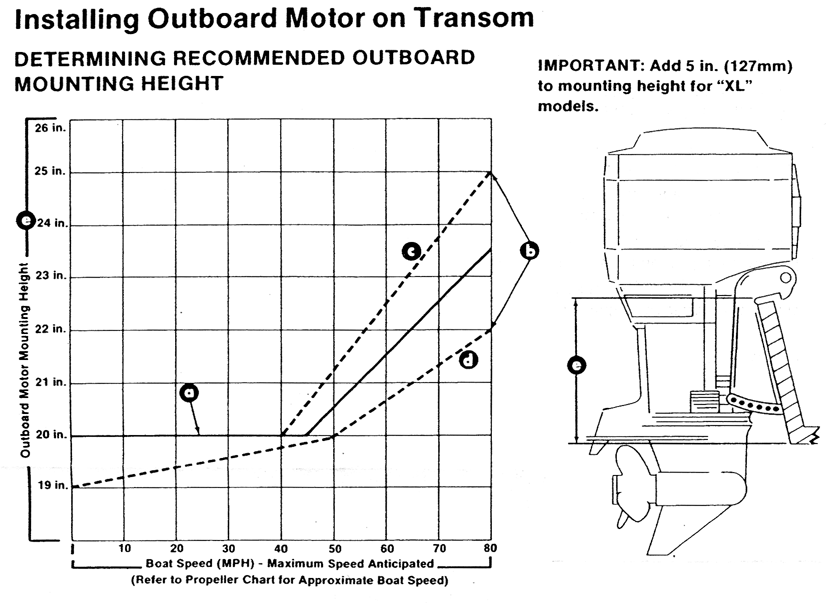by James W. Hebert
This article presents information from Mercury regarding their recommendations for engine mounting height. The recommended mounting height varies with the anticipated speed range of the boat, the objective of the installation, and whether single or dual engines are used.

A—This solid line is recommended to determine the outboard mounting height dimension. Use transom mounting bolt holes that will position outboard nearest to the recommended height. After engine break-in (if necessary), raise or lower outboard one position at a time to attain best performance. IMPORTANT: Increasing the height of outboard will generally provide the following:
B—These broken lines represent extremes of known successful outboard mounting height dimensions.
C—This line may be preferred to determine outboard mounting height dimension if maximum speed is the only objective.
D—This line may be preferred to determine outboard mounting height dimension for dual outboard installation.
E—Outboard mounting height (height of outboard transom brackets from bottom of boat transom). For heights over 22-inches (560 mm), a propeller that is specifically designed for surfacing operation, such as a "Chopper" series, is usually preferred.
If you have a question about this article, please post it to the message thread in the PERFORMANCE forum reserved for that purpose.
DISCLAIMER: This information is believed to be accurate but there is no guarantee. We do our best!
The page has been accessed times.
Copyright © 2007 by James W. Hebert. Unauthorized reproduction prohibited!
This is a verified HTML 4.0 document served to you from continuousWave
URI: http://continuouswave.com
Last modified:
Author:James W. Hebert
This article first appeared May 18, 2008.